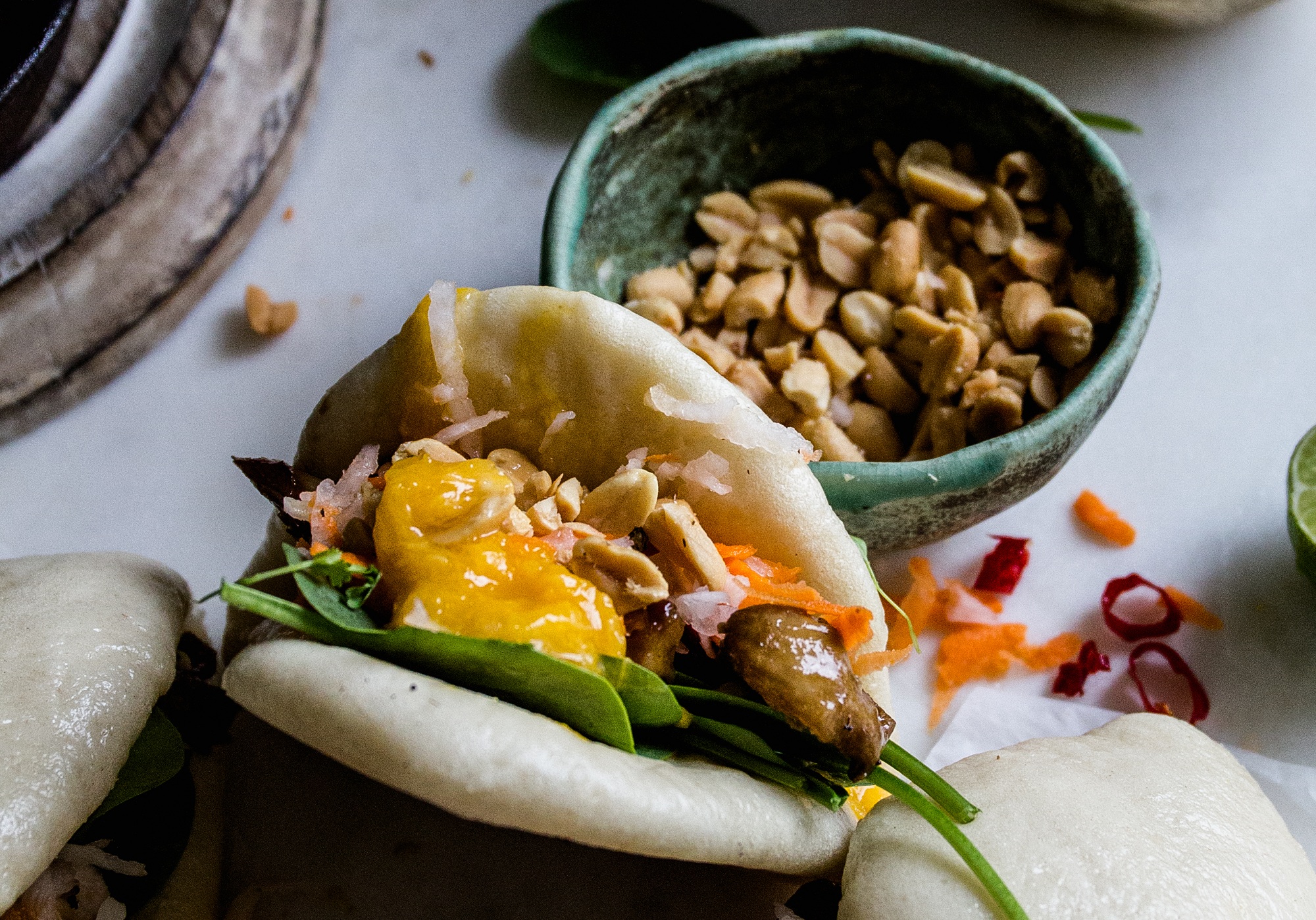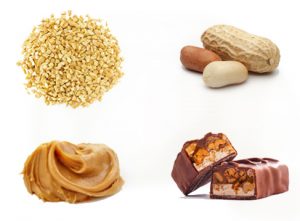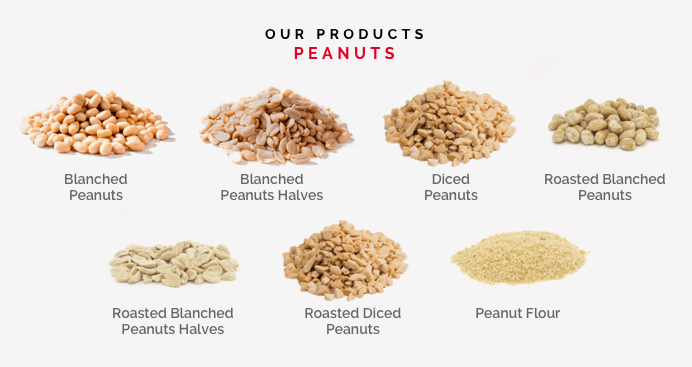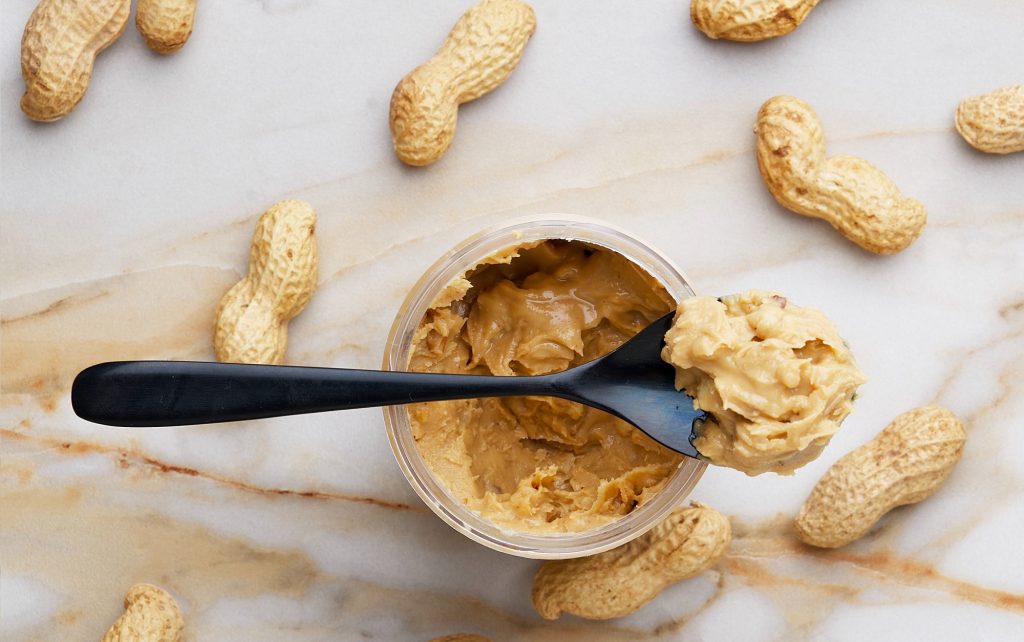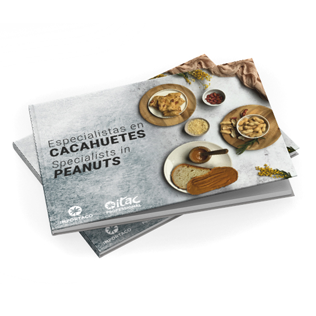According to the International Dry Fruit Council (INC), global peanut production increased over the last two years, with a global forecast of 51.742 tonnes for 2025.
By 2030, the global peanut market is expected to grow from USD 92.77 billion in 2025 to USD 105.47 billion. The largest producers are China, India, Nigeria, Argentina, Indonesia, Senegal and USA.
Spain, even though it doesn’t export this product, has a real market presence in the nut handling and processing industry.
In addition to this, peanuts are one of the most consumed nuts in our country along with:
According to Reportinkler, Spain’s peanut consumption is projected to reach approximately 70.000 tonnes by 2026, increasing at around 0.6% annually.
In this article, we’ll explore how peanuts are used across different culinary and industrial contexts and present the main characteristics of their most common varieties.
Peanut properties
Although commonly referred to as nuts, peanuts are technically legumes, belonging to the botanical family Fabaceae, the same plant group as lentils, soybeans, and chickpeas. This classification has implications for their nutritional profile, setting them apart from true tree nuts like almonds or walnuts.
From a nutritional perspective, peanuts are a natural source of high-quality plant-based protein, providing about 25% protein per 100 grams. This makes them an excellent option for vegetarian and vegan diets.
Peanuts are also:
- Composed of approximately 50% healthy fats, particularly oleic acid (a monounsaturated fat also found in olive oil) and linoleic acid (a polyunsaturated omega‑6).
- A rich source of dietary fiber, contributing to digestive health.
- Packed with essential B vitamins like niacin (vitamin B3), vitamin B6 and pantothenic acid (B5).
- Notably high in minerals including magnesium, phosphorus, potassium and zinc.
According to the Spanish Nutrition Foundation (FEN), peanuts contribute significantly to daily micronutrient intake and support energy metabolism, nervous system health, and muscle function.
Varieties of peanut and their manufactured products
There are different varieties of peanuts in the world. The most widely-cultivated ones are:
| Peanut Variety | Key characteristics | Common uses |
| Runner peanuts | Medium-sized, uniform shape, reddish skin | Peanut butter, coated peanuts, crocanti, confectionery manufacturing |
| Virginia peanuts | Large grains, strong aroma, often sold in-shell | Roasted savoury snacks (in-shell or shelled), gourmet applications |
| Spanish peanuts | Small size, reddish-brown skin, higher oil content | Peanut oil, peanut butter, shelled savoury snacks, confectionery |
| Valencia peanuts | Sweet flavor, usually contains 3 kernels per shell, bright red skin. | Boiled peanuts, roasted and fried snacks (with shell), flavoured savoury products |
Do you work at the food industry? Are you looking for almonds, peanuts or nut pastes?
Processed peanut uses, formats and applications
Thanks to their versatile flavor and nutritional profile, peanuts are widely used in the food industry and can be processed in a variety of ways depending on their final application.
Before processing, peanut pods must be dried to reduce their moisture content to a safe level, typically below 9% humidity, to ensure optimal storage and food safety. After drying, the kernels are removed from the shells, then sorted by size and classified based on their intended use.
Once processed we can find several different formats of peanuts:
- Natural peanuts (raw, with or without skin)
- Roasted peanuts or toasted peanuts (with skin or blanched)
- Fried peanuts
- Blanched peanuts (without shell and without skin)
- Peanut splits (halved kernels)
- Granulated or chopped peanuts
- Peanut flour (used in baking and protein-rich formulations)
- Peanut butter and peanut paste (for spreads, sauces, and fillings)
- Defatted peanut powder (after extracting the oil from the product )
- Peanut oil (cold-pressed or refined)
- Peanut extract (for flavoring and food applications)
These formats make peanuts a key ingredient in confectionery, snacks, plant-based products and even innovative solutions.
Some of the products made with peanuts are:
Peanut Butter
- Made from dry roasted peanuts; can be 100% peanut or contain added salt, sugar or stabilizing oils.
- Naturally free from artificial colors, sweeteners or preservatives (depending on the brand).
- Especially popular in the United States, where over 50% of peanuts are consumed in the form of peanut butter.
Frequently used in:
- Sandwiches and toast
- Protein-enriched bakery products
- Plant-based recipes
- Energy snacks and bars
Peanut Flour
- Produced from roasted and defatted peanuts, ground into a fine, protein-rich flour.
- Naturally gluten-free, making it suitable for celiac diets and vegan consumers.
- Defatted peanut powder: obtained after extracting the oil from the product. Added as an ingredient to enrich food preparations or as a topping for yogurts, desserts, and other foods.
- Offers a mild, nutty flavor and is used to:
- Bake gluten-free bread, cookies and cakes
- Add texture and protein to smoothies and shakes
- Coat savory snacks (e.g., peanut-coated chips or fries)
- Thicken sauces, dips or dressings in industrial production
Peanut Oil
- Extracted from peanuts and known for its neutral flavor and high smoke point (≈232°C / 450°F).
- Ideal for:
- Deep-frying without flavor transfer
- Sautéing or stir-frying in large-scale foodservice environments
- Base for salad dressings or marinades in ready-made meals
- Used in both household cooking and commercial food manufacturing
Peanut butter: Uses in professional kitchens
Peanut butter provides all the properties of this product in a concentrated form, and it’s a very practical solution in pastries and industrial cuisine in order to add flavour and texture to dressings, cakes, chocolates, smoothies, ice cream, rice, or pasta.
It may interest you: Nut butter in the food industry
Peanut butter is a versatile ingredient that goes far beyond toast. Here’s a creative menu where it plays a key role in every course: starter, main and dessert, showcasing its savory and sweet potential.
| Course | Dish | Peanut Butter Integration |
| Starter | Noodles with peanut dressing | Sautéed soba or udon noodles with onion, broccoli, carrot, mushrooms, pepper and coriander. Topped with beef or tofu. Sauce made from peanut butter, olive oil, soy sauce, lemon juice, grated ginger and sesame seeds. |
| Main Course | Chicken with spicy peanut sauce | Grilled chicken served in tacos or skewers, seasoned with pepper. Sauce made using salted peanut butter, garlic, shallot, olive oil, soy sauce, chili and lemon juice. |
| Dessert | Apple muffins with peanut butter topping | Moist muffins made with natural apple. Topping prepared with peanut butter, cream cheese, milk and icing sugar. Finished with chocolate-covered seeds. |
Uses of peanuts in traditional international cuisine
As expert peanut proceducers, we know peanuts are used in dishes in every continent around the world. If you are thinking of adding exotic culinary creations to your restaurant’s menu, then peanut toppings can be of great help to you.
In Asia:
- Lo Mein noodles: Typically tossed with sriracha (Thai chili sauce) and often finished with crushed peanuts for texture.
- Kung Pao prawns: A sweet and spicy stir-fry where peanuts provide the signature crunch.
- Chicken Satay: A Southeast Asian street food classic. Peanut butter is used to make the creamy dipping sauce and can also be added as a finishing touch.
In South America:
- In Peruvian cuisine, peanuts are featured in dishes like ají de gallina and ají de mariscos, where they enrich chicken or seafood stews with a deep, nutty base.
In Indonesia:
- Dishes such as gado-gado, pecel, karedok, and ketoprak use peanut sauce as a staple dressing for fresh vegetable salads.
In Africa:
- In Mali, peanut sauce is used in roasted chicken recipes or served alone with flatbread (pita). This energy-rich sauce typically includes onion, garlic, carrot, cauliflower, and creamy peanut butter.
Why Itac Professional is your ideal partner for peanut-based food innovation
At Itac Professional, as specialized nut suppliers, we offer tailored solutions for businesses across the food industry, from manufacturers of ready meals and sauces to snack and bakery producers. Our specialisation in peanuts ensures full traceability, high food safety standards, and consistent quality in every batch.
As part of Importaco, we operate a dedicated facility equipped with cutting-edge technology and staffed by specialists focused exclusively on peanut handling and innovation.
This allows us to meet the specific needs of each industrial customer with reliable supply, custom formats, and technical guidance.
Whether you’re developing a new product line, adapting to health-conscious consumer trends or enhancing an existing recipe, Itac Professional is your strategic partner for peanut-based innovation.
Check out our catalogue and discover all their many possibilities.
WANT MORE INFORMATION ABOUT OUR PRODUCTS? TAKE A LOOK AT OUR SPECIALISED PEANUT PRODUCTION CATALOGUE FOR THE FOOD INDUSTRY.

